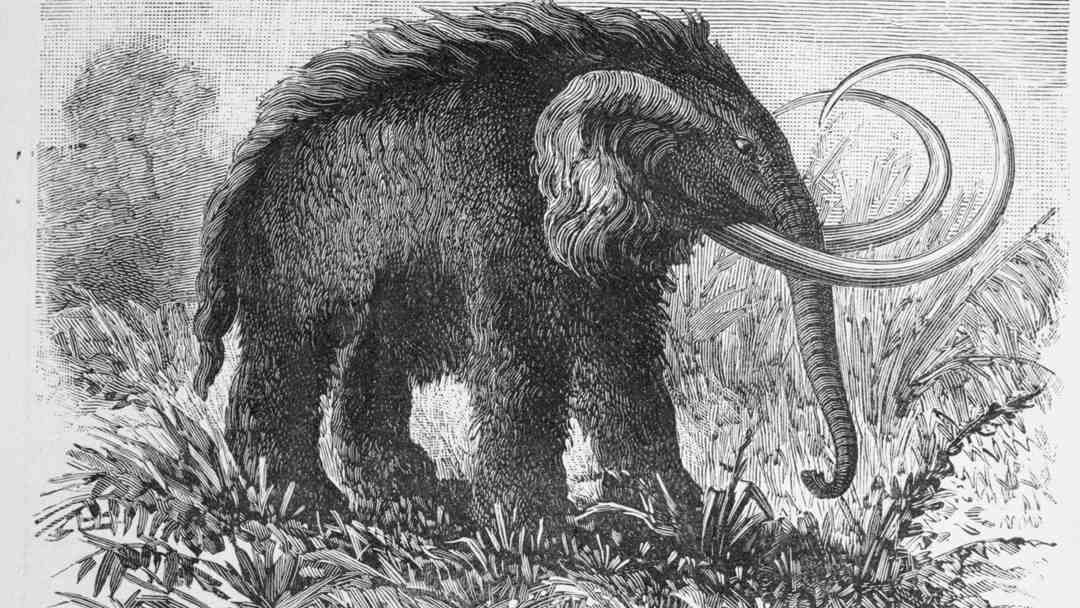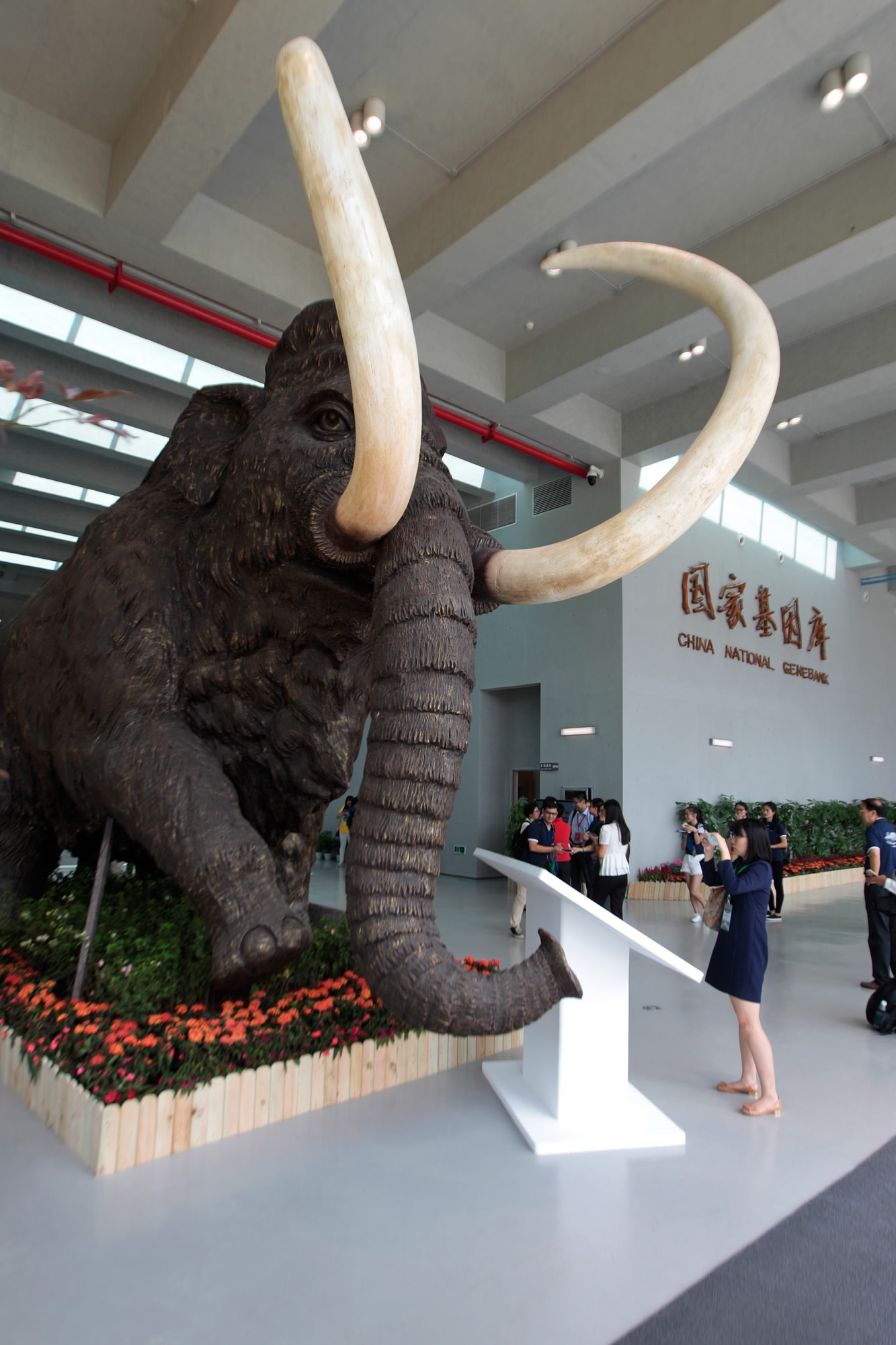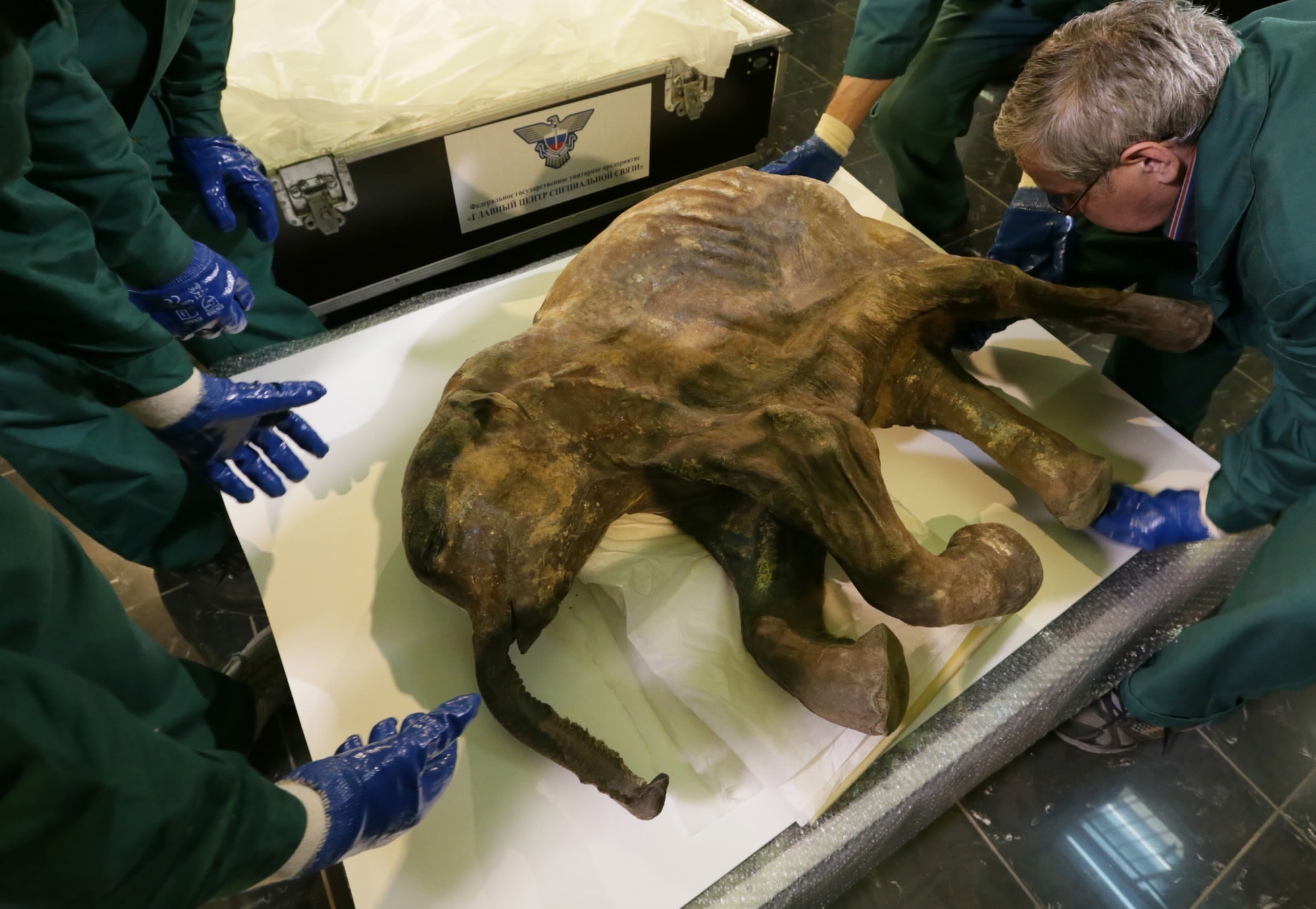
Tech & Sci
14:33, 20-Feb-2017
Chinese scientists working to resurrect the mammoth
Updated
10:49, 28-Jun-2018

The race to resurrect the long-extinct mammoth is on: Japanese scientists have been studying how to revive the massive mammal, while Harvard’s research team has claimed that a hybrid of a mammoth and an elephant could be created within two years. China's scientists are also confident that they can be the first to achieve what would be a scientific marvel.
On February 19, Xu Xun, the principal of the Beijing Genomics Institute (BGI)’s Research Division, chief scientist and executive director of the China National Genebank, told Technology Daily that Chinese scientists have recovered the full capabilities of the mammoth’s cells, and have been able to form embryonic cells. When a suitable surrogate is found, the woolly mammoth, an ancient species that went extinct 4000 years ago, could roam the Earth once again.

Mammoth model on display in China's fourth National Genebank in Shenzhen / CFP Photo
Mammoth model on display in China's fourth National Genebank in Shenzhen / CFP Photo
Resurrection only needs 'three steps'
So how do they resurrect the mammoth? According to Xu Xun, only three steps are required. “The first step is to resurrect the mammoth’s cells. The second step is to recover the full function of the cells, forming embryonic cells. The third step is to find a surrogate elephant to give birth to an individual mammoth."
Six intact carcasses of baby mammoths were found frozen in permafrost off the coast of Siberia in 2013. This allowed scientists to obtain the mammoth’s nucleus from their hair cells. Xu Xun explained that “scientists injected the mammoth’s nucleus into the Asian elephant cells from which the nucleus had been removed. Now the nucleus of the cell is the genome of the mammoth, showing the characteristics of the mammoth. It is just how a mammoth’s cell is resurrected.”

Moscow, Russia. October 23, 2013. Lyuba, a mummified month-old female woolly mammoth is the world's most well preserved baby mammoth. She was discovered on the bank of a remote Siberian river in 2007. / CFP Photo
Moscow, Russia. October 23, 2013. Lyuba, a mummified month-old female woolly mammoth is the world's most well preserved baby mammoth. She was discovered on the bank of a remote Siberian river in 2007. / CFP Photo
Potential difficulty
Many institutions have diverse understandings or definitions about the expression "resurrection", as Xu said. “Chinese scientists would be regarded as having completed resurrection of the mammoth in the light of the criterion of breeding live embryonic cells. But if it is on the basis of breeding individual mammoths, there is still a long way to go.”
It will likely be very difficult to prevent rejection within the surrogate’s womb because the genomic difference between mammoths and Asian elephants is as high as 4.7 percent, which could easily result in miscarriage. Xu said there was still hope even if the elephant surrogate was not a viable option, as “the third step can be undertaken with artificial wombs, which are expected in another 5 to 10 years.”
Not all extinct animals can be resurrected
There exists a possibility that the mammoth can be resurrected, because the cold environment in Siberia preserved the complete gene nucleus for thousands of years. However, whether dinosaurs could ever be resurrected is still unknown, as only dinosaur fossils have been discovered, with no live genomic cells ever recorded.

Mammoth Park, Dalai Nur District, Inner Mongolia / CFP Photo
Mammoth Park, Dalai Nur District, Inner Mongolia / CFP Photo

SITEMAP
Copyright © 2018 CGTN. Beijing ICP prepared NO.16065310-3
Copyright © 2018 CGTN. Beijing ICP prepared NO.16065310-3